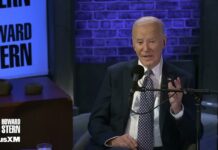Americans continue to chase Christmas in packages, boxes, and bags—while the contentment of yesteryear fades from the collective memory.
Most every Christmas growing up in the 1950s, Brad Harris got socks, a new pair of jeans, and—if he was fortunate—a new sweater.
He lived with his mom, who was a single parent, as well as his grandmother, great aunt, and younger brother. Finances were tight, but there was always food on the table, including a big dinner for Christmas.
“We never felt deprived, but we didn’t compare what we had with other folks,” Mr. Harris, 87, told The Epoch Times. “It was a wonderful time really. It was a lot less frivolous. I think it made a better generation of us.”
To help with family expenses, he usually held more than one job at a time—including delivering newspapers until he graduated high school. It was a big delight one year when he received a Hawthorne bicycle with a tank and headlight for Christmas.
“It was one of my prizes, and I rode that thing clear through high school,” Mr. Harris said. “I had probably worn out two or three bicycles carrying papers.”
Decorations were sparse—they couldn’t afford a tree so they usually cut down a fresh one from a friend’s property—yet the Harris brothers never forgot to buy something for mom. One year, it was a set of clear pink serving dishes for eight that cost no more than $3.
These days, Mr. Harris no longer tries to pick out meaningful gifts for each family member. He has 14 great-grandchildren. He makes homemade caramel and hands out cash.
There’s not much the kids want that they don’t already have, he said.
“We found a long time ago, 100-dollar bills fit everybody, and the color’s right,” Mr. Harris said. “I spend more on Christmas than my mother made in a year.”
Spending Obsession
Christmas gift giving in the United States has always been a big deal, but it seems to continue getting bigger. Data available for the past 20 years shows overall spending has nearly doubled since 2003, climbing every year except during the financial crisis in 2008. The National Retail Federation (NRF) predicts growth will be a bit lower—3 to 4 percent—in 2023 than in 2022.
By Amy Denney















































